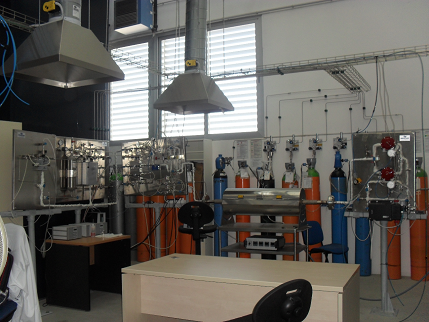-
Projects
Study of the oxidation of mixtures of ammonia and biorefinery fuels and their impact on pollutant emissions (SOMA)

- Start date: 01/09/2022
- End date: 31/08/2025
- Coordinator: María U. Alzueta, María Abián
- Type: Ministerio de Ciencia e Innovación
- Funding: 286272 €
The present project deals with the study of the use of ammonia and biorefinery fuel mixtures as energy vector, with the aim of contributing to a free carbon economy, or at least to a low-carbon one. Ammonia, as fuel, can be ideally burned to produce water and nitrogen, although in practice, uncer certain conditions, the formation of nitrogen oxides may happen. Nowadays, from a practical point of view and given the poor combustion characteristics of ammonia, the most promising strategy for ammonia use includes its blending with other fuels, in the so-called dual fuel approach. In the present project application, the fuels considered for mixing with ammonia are: syngas, biogas, methanol and dimethylether, all of them able to be generated in biorefinery processes.
In this context, the main objective of the present project is to contribute to the knowledge of the oxidation of ammonia mixtures with the mentioned biorefinery fuels, considering both the mixtures conversion and the products formation, evaluating pollutant emissions formed. The nitric oxide reduction capacity by the mixtures considered will be evaluated, since synergies leading to the minimization of this pollutant can be produced through two mechanisms that can be produced jointly: reburning by the action of hydrocarbon radicals and selective non-catalytic reduction (SNCR) of NO by the action of ammonia present in the mixtures. A proper optimization of the operating conditions that favors these synergies could lead to a maximum NO reduction. An extensive experimental study on the conversion of the ammonia mixtures with the mentioned biorefinery fuels will be carried out, considering the influence of different operating variables, such as temperature, oxygen stoichiometry, pressure (from atmospheric pressure up to 60 bar), gas residence time, and the composition of the considered mixtures. Likewise, the impact of the presence of NO on the oxidation regime of the mixtures and the optimum conditions that will allow to achieve minimum NO emissions will be determined. The ability of ammonia, when burned in mixtures with carbon fuels, to contribute to the minimization of soot formation will be evaluated as well.
The combination of the experimental and kinetic modeling studies carried out will allow to identify mechanisms through which the oxidation of the mixtures considered takes place, as well as those mechanisms involving the reduction of NO, and, if applicable, of soot. In this sense, the reaction mechanisms, developed and validated for the different mixtures in the present project, will be very useful as a tool to simulate the conversion process of ammonia and biorefinery fuel mixtures in representative cases for industrial application in real conditions that occur in combustion chambers.

